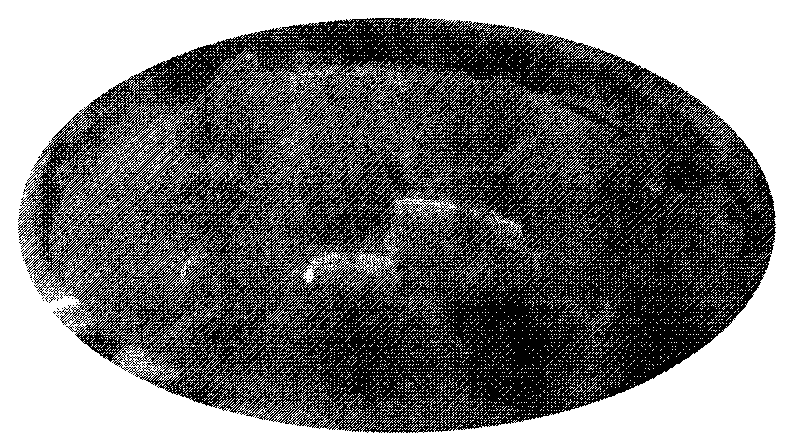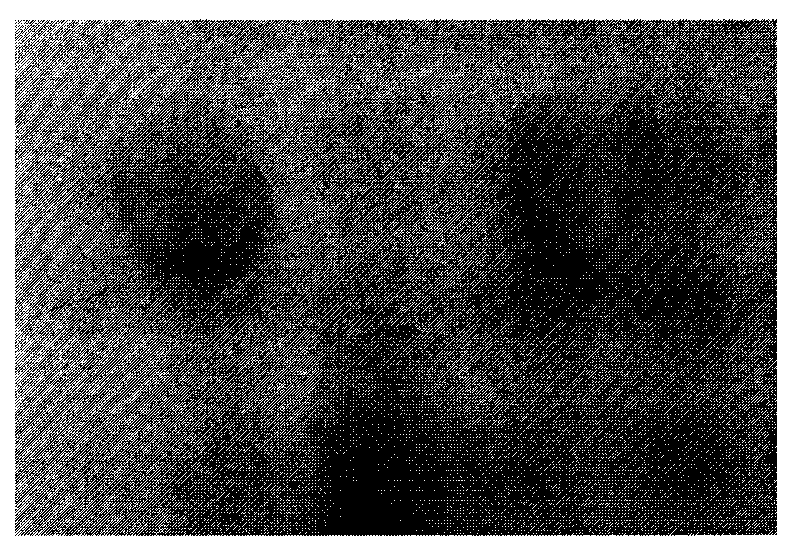Nonglutinous rice callus culture medium and genetic transformation method mediated by agrobacterium tumfaciens
A culture medium, Agrobacterium technology, applied in horticultural methods, botanical equipment and methods, recombinant DNA technology, etc., can solve the problems of low transformation efficiency, easy death, poor growth status, etc.
- Summary
- Abstract
- Description
- Claims
- Application Information
AI Technical Summary
Problems solved by technology
Method used
Image
Examples
Embodiment 1
[0084] A new medium suitable for the growth of indica rice callus (named LY medium, the same below):
[0085] Concentration of substances (basic composition: macroelements)
[0086] Nitrate ion (NO 3 -) ) 40 or 45 or 51 or 56 or 62 or 66 or 70mM
[0087] Ammonium ion (NH 4 + ) 10mM or 20mM or 30mM
[0088] Potassium ion (K + ) 30mM or 40mM or 50mM or 60mM
[0089] Phosphate ion (PO 4 3- ) 2mM or 3mM or 4mM or 5mM
[0090] Magnesium Sulfate Heptahydrate (MgSO 4 *7H2O) 150mg / L or 250mg / L or 400mg / l
[0091] Calcium Chloride Dihydrate (CaCl 2 *2H 2 O) 150mg / L or 250mg / L or 400mg / L
[0092] Manganese sulfate (MnSO 4 ) 20mg / L or 30mg / L or 40mg / L
[0093] Zinc sulfate (ZnSO 4 ) 2mg / L or 4mg / L or 6mg / L or 10mg / L
[0094] Boric acid (HBO 3 ) 5mg / L or 10mg / L or 15mg / L
[0095] Potassium iodide (KI) 1mg / L or 3mg / L or 5mg / L;
[0096] Copper sulfate pentahydrate (CuSO 4 *5H 2 O) 0.01mg / L or 0.05mg / L or 0.1mg / L
Embodiment 2
[0107] Plasmid pCAMBIA1301 (purchased from CAMBIA Company, Australia) and Agrobacterium strain EHA105 (preserved in this experiment) were used to transform the mature embryo-induced callus of indica rice material 9311 (preserved in this laboratory). A kind of transgenic method mediated by agrobacterium on rice tissue culture medium, its steps are:
[0108] A. Callus induction:
[0109] Induction medium:
[0110] On the basis of LY medium, add: sucrose: 30g / L, acid hydrolyzed casein: 500-800mg / L, glutamine: 300-500mg / L, proline 300-500mg / L, 2,4- d: 0.5-1.5mg / L; cytokinin (kt or ba, 6-ba, etc.) concentration: 0.0-0.5mg / L; boil the plant gel with 800ml deionized water in a microwave oven, and add the ingredients to the fixed solution to 1000ml. Ph 5.4-5.8 30ml or 50ml / bottle is divided into 50ml or 100ml Erlenmeyer flasks, sealed with assembled sealing film, and sterilized at 115 degrees Celsius for 15 minutes. After the mature rice embryos have been removed from the glumes, ...
Embodiment 3
[0147] Using plasmid pCAMBIA1301 (purchased from pCAMBIA company in Australia), Agrobacterium is EHA105 strain (preserved in this experiment), transforming indica rice material 9311, yta, Minghui 63, Jiang-s, 94d-2, ytb / 9311, 71994, 5-34 / Zhe 733, y58s-1, IR40931, kaslath, IR64, DML105, FR13A, GodaHeenati, E32, Tianyuan 96-2, Xian'ais, MC526, GD-1SD and other 20 varieties of induction, cultivation, Agrobacterium transformation.
[0148] A. Callus induction:
[0149] Induction medium:
[0150] On the basis of LY medium, add: sucrose: 30g / L, acid hydrolyzed casein: 500-800mg / L, glutamine: 300-500mg / L, proline 300-500mg / L, 2,4-d : 0.5-1.5mg / L; cytokinin (kt or ba, 6-ba, etc.) concentration: 0.5-0.5mg / L; boil the plant gel with 800ml deionized water in a microwave oven, add the ingredients to the 1000ml. Ph 5.4-5.8 30ml or 50ml / bottle is divided into 50ml or 100ml Erlenmeyer flasks, sealed with assembled sealing film, and sterilized at 115 degrees Celsius for 15 minutes. After...
PUM
 Login to View More
Login to View More Abstract
Description
Claims
Application Information
 Login to View More
Login to View More - R&D
- Intellectual Property
- Life Sciences
- Materials
- Tech Scout
- Unparalleled Data Quality
- Higher Quality Content
- 60% Fewer Hallucinations
Browse by: Latest US Patents, China's latest patents, Technical Efficacy Thesaurus, Application Domain, Technology Topic, Popular Technical Reports.
© 2025 PatSnap. All rights reserved.Legal|Privacy policy|Modern Slavery Act Transparency Statement|Sitemap|About US| Contact US: help@patsnap.com



